When you start an auto repair shop, you’ll need tools and equipment. They are vital for your daily work. They will be one of your most important investments. The right tools are essential. They improve your services. They also make your work more efficient, safe, and high quality.
Here is a full, category-wise list of tools for your new auto repair business.
Basic Hand Tools
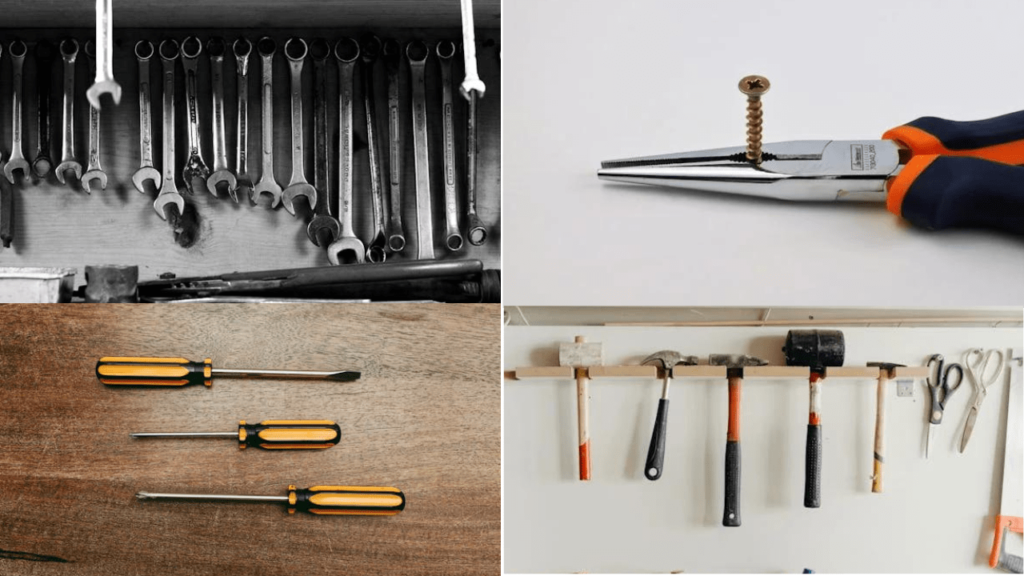
Your auto repair shop needs a full set of basic hand tools. They are essential for tasks, from simple maintenance to complex repairs. These tools are the backbone of a mechanic’s toolkit. They enable precise work on various vehicle parts.
Wrenches:
Wrenches are essential in auto repair shops. They let you tighten and loosen nuts and bolts with precision. There are several types of wrenches, each serving a specific purpose:
- Combination wrenches: These have an open end on one side and a box end on the other, making them versatile for different applications.
- Socket wrenches: A ratchet pairs with these wrenches. It allows easy, quick turning of fasteners in tight spots.
- Torque wrenches: These are crucial for ensuring bolts are tightened to the manufacturer’s specs. It prevents over-tightening or under-tightening, which can cause component failure.
Screwdrivers:
Screwdrivers are another essential hand tool. They drive screws into or out of various materials. In an auto repair shop, you’ll need a variety of sizes and types:
- Flathead screwdrivers: Used for screws with a single slot, these are common in many older vehicles.
- Phillips screwdrivers: These are the most common screws in modern vehicles. They are designed for cross-head screws.
- Specialty screwdrivers: These include Torx and Pozidriv, widely used in automotive manufacturing today.
Pliers:
Pliers are versatile tools. They grip, bend, cut, and twist wires or small parts. Key types include:
- Needle-Nose Pliers: They have long, narrow jaws. They’re perfect for tight spaces and small parts.
- Slip-Joint Pliers: These pliers have adjustable jaws. They can grip objects of various sizes. This makes them very versatile.
- Locking Pliers (Vise-Grips): You can lock these in place to safe hold an object, freeing up your hands for other tasks.
Hammers and Mallets:
Hammers and mallets have many uses. They drive in fasteners and shape metal parts. The two most common types in an auto repair shop are:
- Ball-Peen Hammer: Known for its rounded peen, this hammer is ideal for shaping metal and driving punches or chisels.
- Rubber Mallet: It applies force without damaging surfaces. For example, it can knock parts into place without leaving marks.
Pry Bars:
Pry bars are vital for leveraging, lifting, and prying apart parts. They are especially useful on stubborn, stuck components. They provide the force to loosen parts without damaging them. They are invaluable for tasks like removing old suspension parts and separating brake rotors from hubs.
Power Tools
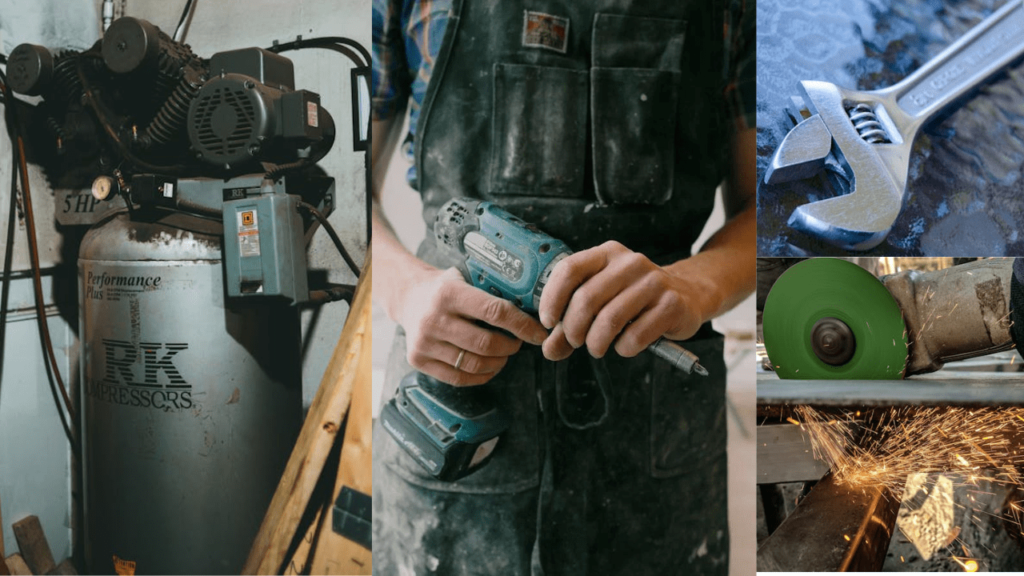
In an auto repair shop, power tools are vital. They boost productivity and ensure quick, efficient work. These tools can do tough jobs. Manual work would be slow and tiring. Below are some of the most crucial power tools every auto repair shop should have.
Impact Wrench:
An impact wrench is a powerful tool used to quickly remove and tighten bolts, nuts, and screws. This tool is vital for stubborn, rusted fasteners that are hard to loosen manually. Impact wrenches produce high torque with little effort. They are vital for tasks like changing tires and working on suspensions. An impact wrench’s speed and power can cut time on repetitive tasks. This lets technicians tackle complex repairs sooner.
Air Compressor:
An air compressor is one of the most versatile and essential pieces of equipment in an auto repair shop. It powers many pneumatic tools, like impact wrenches and spray guns. Air compressors power tools. They also inflate tires, clean parts, and run shop equipment. Choose the air compressor’s capacity and power based on the shop size and the tools it will support.
Drill:
Mechanics use drills to create holes and drive screws into various materials. In an auto repair shop, both cordless and corded drills have their place:
- Cordless Drills: Offer the advantage of portability and are ideal for quick jobs or when working away from a power source. But, they may not have the same power or battery life as corded models.
- Corded Drills: They provide consistent power. They are suitable for demanding tasks that require prolonged use. Have on hand a selection of drill bits. Include metal, wood, and masonry bits to handle different materials.
Grinder:
Grinders are multi-purpose tools used for cutting, grinding, and polishing metal components. In auto repair, they cut metal parts like exhaust pipes. They grind down welds and remove rust from surfaces. There are different types of grinders. Angle grinders are the most common and versatile. Bench grinders are best for sharpening tools and smoothing edges.
Jigsaw and Sawzall:
Both jigsaws and Sawzalls are important for cutting metal and other materials.
- Jigsaw: Known for its precision, the jigsaw is used for making intricate cuts in metal, wood, and plastic. Its small, narrow blade allows for curved cuts. So, it is ideal for custom work or detailed tasks.
- Sawzall: A reciprocating saw, often referred to as a Sawzall, is used for more aggressive cutting tasks. It can cut through metal, wood, and even car bodies. So, it’s a vital tool for demolition and modification work.
Diagnostic Equipments
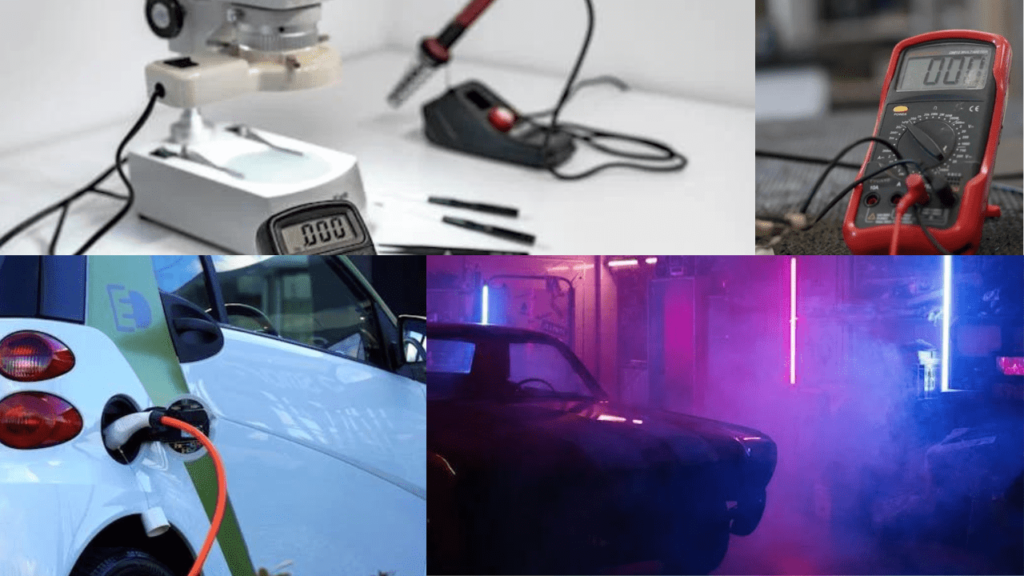
In modern auto repair shops, diagnostic tools are vital. They find and fix vehicle issues. As cars get more complex and electronic, the right tools are vital for fast, accurate repairs. Below are some key diagnostic tools that every auto repair shop should have.
OBD-II Scanner:
An OBD-II (On-Board Diagnostics) scanner is a vital tool for any auto repair shop. It connects to a vehicle’s OBD-II port. It lets technicians read and clear diagnostic trouble codes (DTCs). These codes help identify issues in the engine, transmission, and other systems. They make it easier to find the root cause of a problem. An OBD-II scanner lets technicians diagnose issues. These include emissions problems, engine misfires, and sensor failures. This leads to faster, more accurate repairs.
Multimeter:
A multimeter is a must-have tool. It checks electrical circuits and measures voltage, current, and resistance. In an auto repair shop, a multimeter diagnoses many electrical problems. It tests battery voltage, checks wire continuity, and diagnoses sensor issues. Its versatility makes it essential for any task with the vehicle’s electrical system.
Battery Tester:
A battery tester is crucial for assessing the health of a vehicle’s battery. It measures the battery’s charge level, cold cranking amps (CCA), and overall condition. A battery tester lets technicians quickly check a battery. It shows if it needs replacement or if there are charging issues. This tool prevents unnecessary battery replacements. It ensures customers’ vehicles are reliable and safe to drive.
Compression Tester:
A compression tester checks an engine’s health. It measures the pressure in the cylinders during the compression stroke. This test finds issues like worn piston rings, leaking valves, or blown head gaskets. Technicians can check an engine’s health by comparing the compression of each cylinder. A compression tester is vital for diagnosing engine issues. They can cause poor performance and low fuel efficiency.
Smoke Machine:
A smoke machine is key for finding leaks in a vehicle’s intake, exhaust, or other sealed systems. It works by introducing smoke into the system. Technicians can then see where leaks are, even if they are hard to detect. This tool is great for diagnosing vacuum leaks. They can cause rough idling, stalling, and poor fuel economy. A smoke machine finds and fixes leaks. This improves engine performance and reliability.
Lifting Equipments
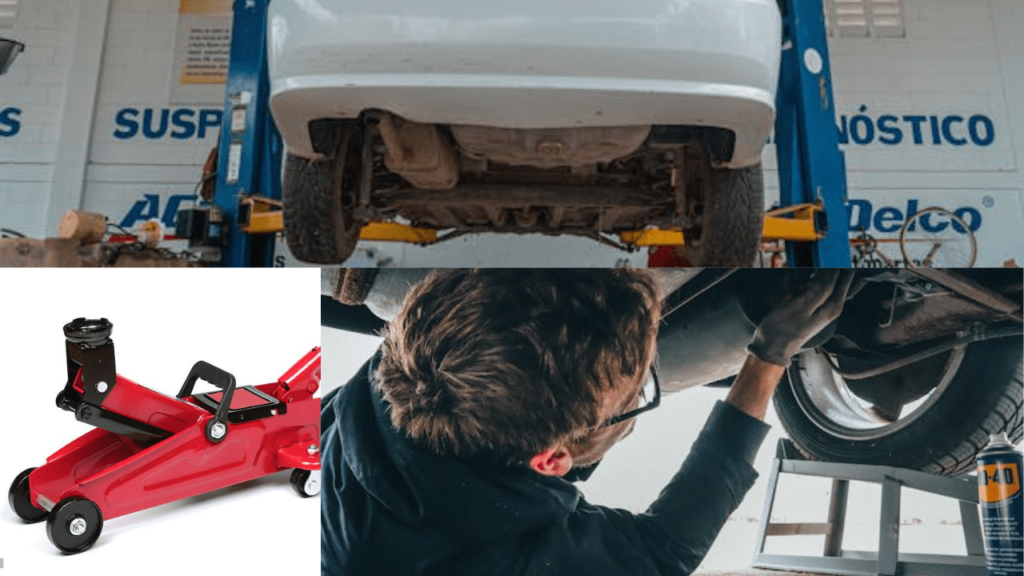
An auto repair shop needs lifting equipment. It lets techs raise vehicles for inspections, repairs, and maintenance. The right lifting tools boost efficiency and ensure safety. They protect both the technician and the vehicle. Below are some of the key lifting equipment items that every auto repair shop should have.
Hydraulic Lift:
Hydraulic lifts are vital to auto repair shops. They lift vehicles off the ground. There are two main types of hydraulic lifts used:
- Two-Post Lift: This type of lift is popular for its versatility and space efficiency. It has two posts with arms that can be adjusted to lift vehicles by their frame or chassis. Two-post lifts are best for general repairs. This includes tire changes, brake work, and undercarriage inspections. They are also great for shops with limited space, as they allow easy access to both the front and rear of the vehicle.
- Four-Post Lift: A four-post lift is more stable and can handle heavier vehicles. It supports the vehicle by its tires. So, it’s ideal for wheel alignments and suspension work. A four-post lift is more stable. So, it is better for long-term vehicle storage. This type of lift is especially useful in shops that work on larger vehicles like trucks and SUVs.
Floor Jack and Jack Stands:
For small jobs that don’t need a hydraulic lift, a floor jack and jack stands are essential.
- Floor Jack: A floor jack lifts a vehicle. It’s for tire changes, brake repairs, or undercarriage inspections. It is portable and easy to maneuver, making it ideal for quick, on-the-spot lifting. When using a floor jack, choose one with the right weight capacity for the vehicles.
- Jack Stands:
- Once a vehicle is lifted with a floor jack, jack stands are used to hold it in place. Jack stands add stability and safety. They prevent the vehicle from falling while technicians work underneath. They are vital for keeping the vehicle elevated during repairs.
Creeper:
A creeper is a low-profile tool with wheels. It lets technicians slide under a vehicle to work. It offers a smooth, ergonomic way to access the vehicle’s underside without lying on the floor. Creepers often have padded surfaces and adjustable headrests. They boost comfort for long work sessions. They are useful for inspecting exhaust systems, changing oil, and checking for leaks.
Specialized Tools
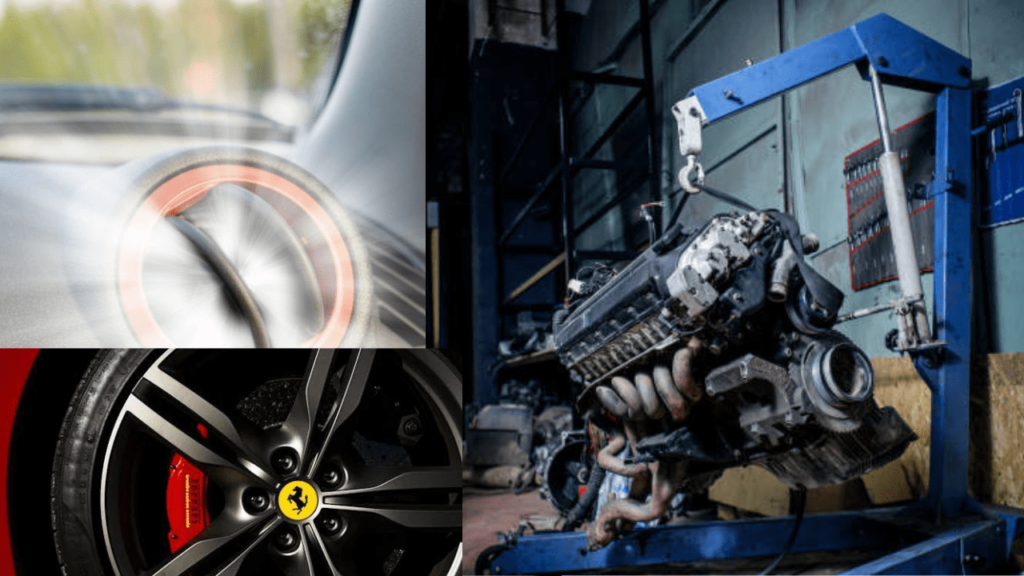
In an auto repair shop, specialized tools are vital. They perform precise tasks that need expertise. These tools help technicians perform complex repairs and maintenance. They fine-tune vehicles to peak performance.
Below are some key specialized tools that every auto repair shop should have.
Brake Bleeder Kit:
A brake bleeder kit is crucial for maintaining and repairing a vehicle’s brake system. It lets technicians remove air bubbles from the brake lines. This ensures the brake fluid flows smooth and the brakes work well. If the brakes aren’t bled, air can get trapped in the lines. This can make the brake pedal feel spongy and reduce braking power. It is dangerous. A brake bleeder kit simplifies this. It makes it easier to do regular brake maintenance and keep the vehicle safe.
Timing Light:
A timing light adjusts the engine timing. It ensures the spark plugs fire at the right time in the engine’s cycle. Proper engine timing is crucial. It ensures top performance, fuel efficiency, and low emissions. The timing light flashes with the spark plug firing. It lets technicians see the timing marks on the engine’s crankshaft pulley. This tool is vital for older cars with adjustable timing. It ensures the engine runs.
Cooling System Tester:
A cooling system tester is vital for diagnosing cooling system issues in a vehicle. This tool lets techs check for leaks, pressure, and the cooling system. Technicians can find leaks by pressurizing the system. They do this by attaching the tester to the radiator or coolant reservoir. This is critical to prevent engine overheating. It can cause severe damage if unchecked. A cooling system tester checks that the engine stays at its ideal temperature. This protects it from damage.
Engine Hoist:
An engine hoist, or engine crane, removes and installs vehicle engines. This tool is vital for shops that do major engine work, like rebuilds, replacements, or repairs. The engine hoist lets technicians lift and move heavy engines. It prevents injury and vehicle damage. An engine hoist has adjustable arms and a hydraulic lift. It can handle engines of different sizes and weights. This tool is indispensable for any shop that handles in-depth engine work.
Shop Equipments
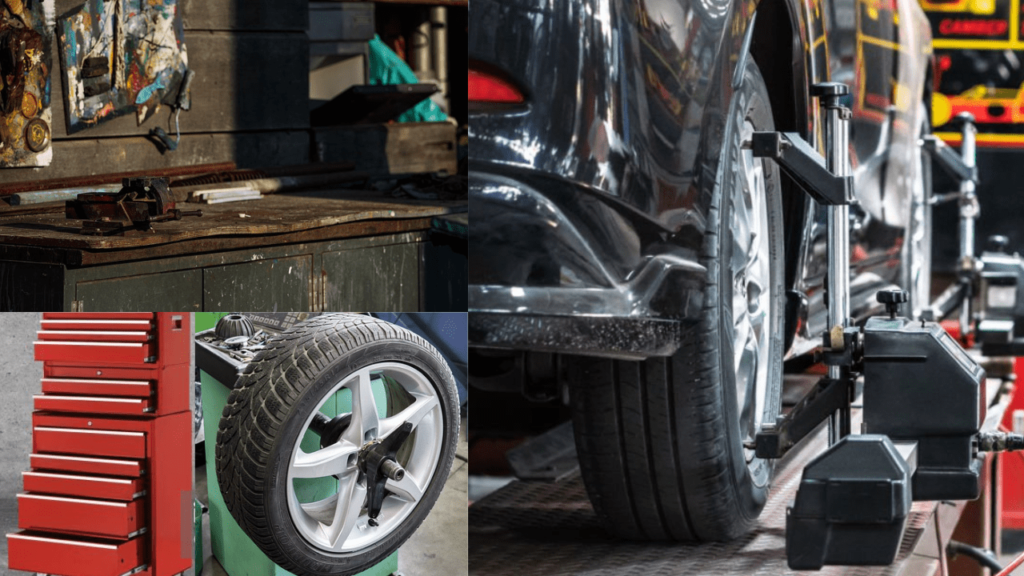
Shop equipment is the backbone of any auto repair shop. It provides the infrastructure for organization, efficiency, and productivity. Proper shop equipment improves the work environment. It also ensures that tasks are done properly. Every auto repair shop should have some essential equipment.
Tool Chest:
A tool chest is critical for your auto repair shop. It keeps tools organized and secure. A well-organized tool chest lets technicians quickly access tools. This reduces downtime and improves workflow. Tool chests vary in size and design. They have drawers and compartments. They store everything from small hand tools to larger power tools. Security is key. A sturdy, lockable tool chest protects valuable tools from theft and unauthorized use. A high-quality tool chest keeps your tools in good condition. It also keeps them ready for use.
Workbench:
A durable workbench is essential in any auto repair shop. It provides a sturdy surface for technicians to work on. The best workbenches can take heavy use. They have a solid top made of steel or hardwood. Many workbenches have built-in storage, like drawers or shelves. This lets technicians keep frequently used tools and parts within easy reach. Features like a built-in vise or power outlets can enhance the workbench. They make it essential to the shop’s infrastructure.
Parts Washer:
A parts washer is vital for cleaning auto parts before repair or reinstallation. Over time, grease, oil, and dirt build up on engine parts, brakes, and other components. This can hurt performance and make them hard to work on. A parts washer uses a solvent or water solution to remove contaminants. It ensures that parts are clean and ready for use. It improves repair quality and extends component life. It prevents dirt from causing wear and damage.
Tire Changing Machine:
A tire changing machine is a must-have for any auto repair shop that offers tire services. This machine speeds up tire removal and installation on rims. It reduces strain on technicians and lowers the risk of damaging tires or rims. Tire changing machines are vital for high-volume tire shops. They speed up the process and boost productivity. Tire changing machines have adjustable clamps and automatic bead breakers. These features make them versatile for many tire sizes and types.
Wheel Balancer:
A wheel balancer is vital. It ensures tires are balanced before installing them on a vehicle. Balanced tires are crucial for a smooth drive. Unbalanced tires cause vibrations, uneven wear, and lower fuel efficiency. A wheel balancer checks the weight distribution around the tire and rim. It finds any imbalances that need fixing with small weights. A wheel balancer will let your shop offer top tire services. This will boost vehicle performance and customer satisfaction.
Safety Equipments
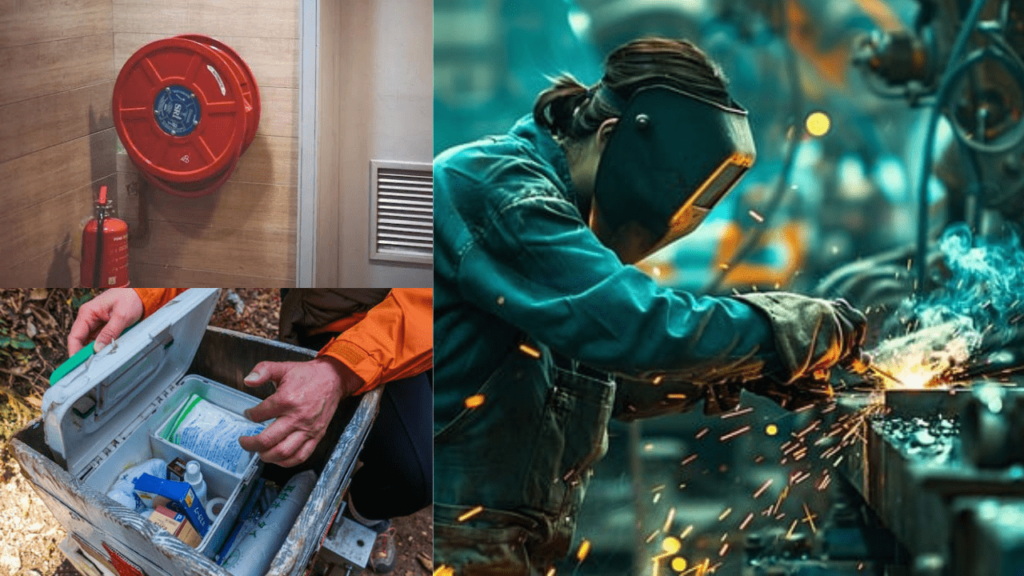
Safety equipment is vital for an auto repair shop. It protects both technicians and customers from hazards. A well-equipped shop prioritizes safety. It prevents accidents and fosters a culture of responsibility. Here are the essential safety equipment items every auto repair shop should have.
Protective Gear:
PPE is the first defense against shop injuries. It’s vital for technicians’ safety to access the right gear.
- Gloves: Gloves protect hands from cuts, burns, chemicals, and other auto repair hazards. Technicians may use different gloves for different tasks. For chemical resistance, they use nitrile gloves. For protection against abrasions, they use heavy-duty mechanic’s gloves.
- Safety glasses: Eye protection is crucial when using tools or chemicals. It is also needed for any activity that could cause debris to fly. Safety glasses or goggles prevent eye injuries from particles, sparks, or fluids.
- Steel-Toed Boots: Foot protection is vital in an environment where heavy tools, parts, or vehicles can pose a risk of injury. Steel-toed boots protect feet from falling objects. They are comfortable and safe for long hours on the shop floor.
Fire Extinguisher:
Auto repair shops must prioritize fire safety. They have flammable materials like gasoline, oil, and solvents. Fire extinguishers are a must-have for quickly responding to fires before they spread.
- Types: The most common type for an auto repair shop is a Class B extinguisher. It is for flammable liquids. A multi-purpose ABC extinguisher is also common. It covers Class A (ordinary combustibles), B (flammable liquids), and C (electrical) fires.
- Placement: Place fire extinguishers throughout the shop, especially near flammable materials. This includes areas near workbenches, entrances, and exits. They should be easy to access and kept in working order.
First Aid Kit:
A fully stocked first aid kit is important. It allows for a quick response to injuries. This helps prevent minor incidents from becoming serious. Here’s what to include:
- Basic Supplies: Bandages, gauze, antiseptic wipes, and adhesive tape for treating cuts, scrapes, and minor burns.
- Burn Treatment: Burn ointment and sterile dressings for burns from welding or hot engines.
- Eye Wash Solution: For flushing out chemicals or debris from the eyes.
- CPR Mask and Gloves: In case of a medical emergency requiring resuscitation. A first aid kit and trained staff can save lives in an emergency.
Ventilation System:
Proper ventilation is vital for a safe, healthy auto repair shop. Fumes from exhaust, chemicals, and dust can harm health if not controlled.
- Importance: A good ventilation system removes harmful fumes and particles. It keeps the shop’s air clean and breathable. This is vital in areas where welding, painting, or using solvents occurs.
- System Types: Depending on the shop’s size and layout, this may include exhaust fans, air filters, or local exhaust systems that capture fumes at the source. Regular maintenance of the ventilation system is essential to keep it functioning.
Explore the right tools before starting your auto repair shop.
In conclusion, the right tools and equipment are not a necessity but a key driver of your shop’s success. Start with the essentials. Then expand thoughtfully. You can build a safe, efficient, and well-equipped auto repair shop. It will meet your customers’ needs and support your business’s growth.
For more tips on starting an auto repair business, check out our other articles.
How to start your own auto repair business
Top Challenges in Starting an Auto Repair Business and How to Overcome Them